Gas consumption from the gas tank for heating: how to calculate + tips to minimize
It is well known that for the heating of houses and cottages with permanent or long-term residence, gas holders are increasingly used. It is not subject to dispute that the large share of the budget for heating a house is the cost of fuel. In our case, this is liquefied gas.
Therefore, the prudent owner of the house should know how to correctly calculate the gas flow from the gas tank for heating, be able to predict the intervals between refueling. This is also true because gas delivery, as a transport service, has its own pretty substantial price.
We will help you in an accessible form to independently calculate the consumption of liquefied gas for heating your home in gas supply systems with a gas holder. This knowledge is relevant when designing the construction of a new house and planning the reconstruction of the existing heating system. Correctly performed calculations will allow you to control gas consumption and reduce its costs.
The content of the article:
Factors Affecting Gas Consumption
The gas holder has the form of a volumetric reservoir, which is filled with liquefied petroleum gas (LPG). This is a mixture of two gases - propane and butane.
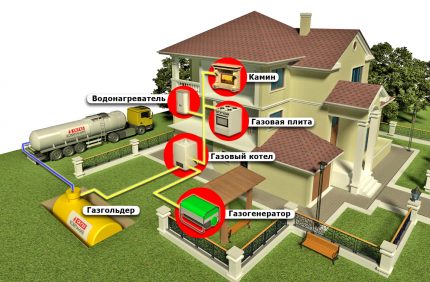
The storage of gas in such tanks, with its further use for heating a house, may be due to the following factors:
- the lack of the possibility of tapping into the main gas pipe or the high cost of such a connection;
- Permanent and unsolved by gas services problems with gas pressure in the central pipeline.
For the normal functioning of most gas boilers gas pressure in the pipeline must be at least 35 mbar. This norm is often not maintained in main gas pipelines and is only from 8 to 22 mbar.
To determine the volume of liquefied gas in the tank, there are mechanical level gauges or more modern remote telemetry systems. Such equipment can be supplied with the tank or purchased separately. The average daily average gas consumption can be determined by the difference in readings gas meter, if available.
But, a more accurate answer to the question of how much gas in the gas tank is enough to heat your home, what is its consumption and how to minimize its costs, mathematical calculations will help. And this is despite the fact that objectively such a calculation will be of an average nature.
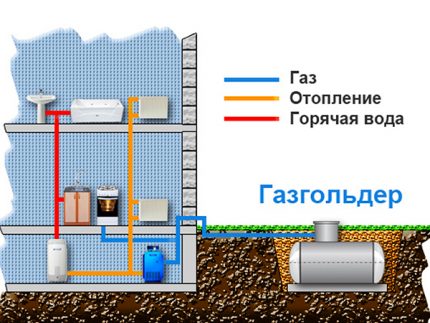
Keep in mind that the following factors influence gas flow:
- regional climate and wind rose;
- the quadrature of the house, the amount and degree of thermal insulation of windows and doors;
- material of walls, roofs, foundations and the degree of their insulation;
- the number of residents and their stay (constantly or periodically);
- boiler technical specifications, use of additional gas appliances and auxiliary equipment;
- the number of radiators, the presence of a warm floor.
These and other conditions make the calculation of fuel consumption from a gas tank a relative value, which is based on average accepted indicators.
Calculation of the power of a gas boiler
The main share in fuel consumption is heating. An important parameter of any house or apartment, affecting the amount of gas spent on heating, is an indicator of heat loss. The task of heating is precisely to correctly compensate for these losses, creating conditions for a comfortable stay.
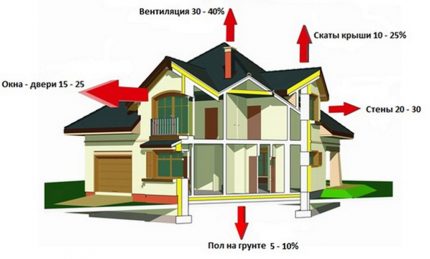
For the standard for calculations, we take a house located in an area with an average climate, in satisfactory condition and insulated in accordance with technology. House area 80 m2.
The average values of heat loss and boiler power can be determined by the square of the area.
The formula is:
Q = S × PP / 10where
Q is the calculated heat loss (kW);
S - the area of the premises that are heated (m2);
PP - the specific power of the gas boiler (kW / m2) - power for every 10 m2.
Specific power for heating an area of 10 m2 already approximately established, subject to amendments for regions with different climates. For our reference house, located, for example, in the suburbs, Pp = 1.2 - 1.5 kW.
Given the area of the house 80 m2, the optimal power of the heating system will have the following meaning:
Q = 80 × 1.2 / 10 = 9.6 kW.
Despite its simplicity, this formula reflects the most accurate results.
Often, for convenience in the calculation, a unit is taken as the value of specific power. Based on this, the power of the heating system is taken at the rate of 10 kW per 100 m2 heating area.
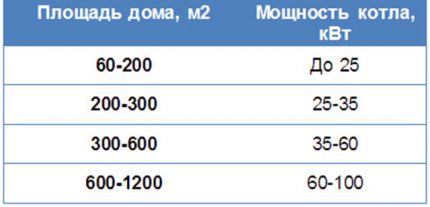
The second option, but accepted with a greater degree of error, is the calculation of the cost of thermal energy for heat loss of a building per cubic meter - the volume of heated rooms. Depending on the climate zone, 30-40 watts are allocated for heating one cubic meter of a room with a ceiling height of up to 3 m.
Calculation of gas flow from a gas tank
The calculation of the consumption for heating of the mixture from the gas storage used in the heating system of the house has its own characteristics and differs from the calculation of consumption main natural gas.
The predicted gas flow rate is calculated by the formula:
V = Q / (q × η)where
V is the calculated volume of LPG, measured in m³ / h;
Q is the calculated heat loss;
q is the smallest specific value of the calorific value of gas or its calorific value. For propane-butane, this value is 46 MJ / kg or 12.8 kW / kg;
η - efficiency of the gas supply system, expressed in absolute value to unity (efficiency / 100). Depending on the characteristics of the gas boiler, the efficiency can range from 86% - for the simplest, up to 96% - for high-tech condensing units. Accordingly, the value of η can be from 0.86 to 0.96.
Suppose that it is planned to equip the heating system with a modern condensing boiler with an efficiency of 96%.
Substituting the initial formula accepted by us for the calculation of the values, we obtain the following average volume of gas used for heating:
V = 9.6 / (12.8 × 0.96) = 9.6 / 12.288 = 0.78 kg / h.
Since it is customary to consider a liter as a LPG filling unit, it is necessary to express the volume of propane-butane in this unit of measurement. To calculate the number of liters in the mass of liquefied hydrocarbon sweep, it is necessary to divide kilograms by density.

The physics of the transition of LPG from liquid to vapor (working) state is as follows: propane boils at minus 40 ° С and above, butane - from 3 ° С with a minus sign. Accordingly, the 50/50 mixture will begin to pass into the gaseous phase at a temperature of minus 20 °WITH.
For middle latitudes and a gas holder buried in the ground, such proportions are enough. But, in order to protect yourself from unnecessary troubles, it is optimal in winter conditions to use a mixture with at least 70% propane content - “winter gas”.
Taking for the calculated density of LPG equal to 0.572 t / m3 - a mixture of propane / butane 70/30 at a temperature of -20 ° C), it is easy to calculate the gas flow in liters: 0.78 / 0.572 = 1.36 l / h.
The daily consumption for such a selection of gas in the house will be: 1.36 × 24 ≈ 32.6 liters, during the month - 32.6 × 30 = 978 liters. Since the obtained value was calculated for the coldest period, then adjusted for weather conditions it can be divided in half: 978/2 = 489 liters, on average per month.
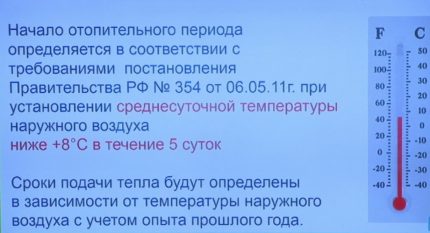
In the area that we took as an example (Moscow region), such a period averages 214 days.
The gas consumption for heating during the year when calculating will be: 32.6 / 2 × 214 ≈ 3488 l.
Choosing the optimal gas tank consumption
A gas holder is expensive equipment that is purchased and installed for more than one year. Not only the efficiency of the home heating system depends on its correct choice, in many respects. The type and type of storage for liquefied gas may indirectly depend on heating costs.
Comparison of ground and underground gas tanks
Ground gas tank is a cheaper option for autonomous gasification. Such tanks, as a rule, are smaller in volume and their installation does not require expensive earthworks.
But, when using ground gas tanks for heating in winter, it is necessary to take into account that the evaporation of the propane-butane mixture during this period will be reduced and problems with gas pressure are possible.
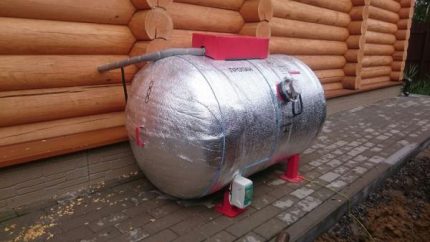
Of course, the temperature threshold for the transition of LPG to the gaseous phase of the fuel can be reduced due to the higher content of propane in the mixture.But this will entail additional costs, since such gas is more expensive than butane.
Underground gas tanks are the most popular storage facilities for LPG.
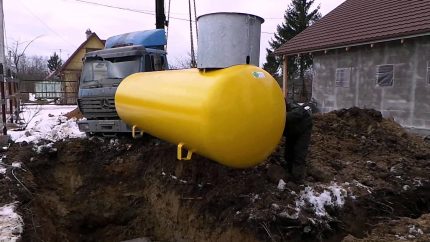
The immersion depth of the container should be such that the soil layer above it is at least 0.6 m. This will protect the storage from freezing and mechanical damage.
Vertical or horizontal gas tank
In-ground gas holders are of two types in shape:
- Vertical.
- Horizontal
These containers differ from each other not only by their performance, but also functionally - by the surface area of the liquefied mixture, called the “evaporation mirror”.
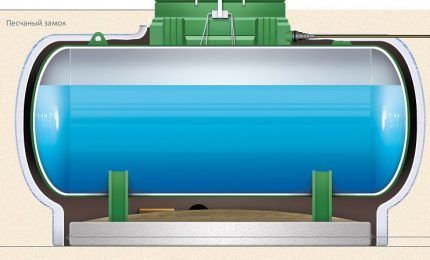
Vertical storages are more often used in autonomous gas systems of small houses or summer cottages, if their full heating in winter is not required.
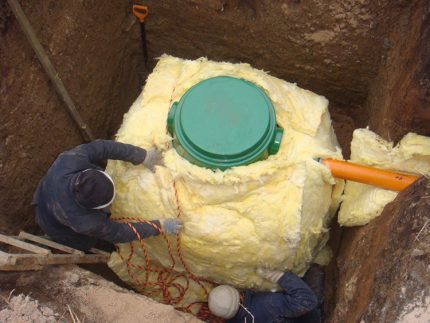
Features of the mobile gas tank trailer
To solve the problem of heating and creating comfortable living conditions in winter in cottages with temporary residence, construction projects, where the gas storage equipment is impractical or technically not possible, allows mobile gas tank.
This is a tank equipped with a trailer, with a capacity of 500-600 liters. How long this gas tank with a capacity of 600 liters will last can be predicted by adopting the average standard used - 30-40 liters of liquefied gas per 1 square meter of space.
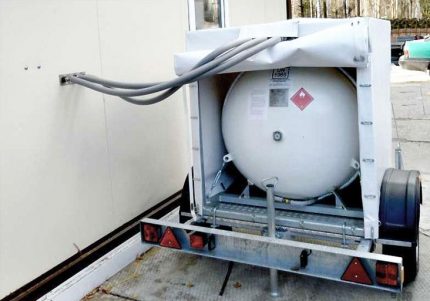
It should be understood that the operation of a mobile gas tank as a ground-type tank in the winter or in the northern regions will require warming and forced heating of the tank. For this reason, a trailed gas tank is not an entirely acceptable heating option.
How to choose a gas holder by volume
Of the typical underground gas tanks, reservoirs with volumes of 2700 liters and 4850 liters are optimally applicable for country houses and cottages.
When choosing the size of a gas storage, the following factors must be considered:
- With a permanent residence in a house with independent heating, it is advisable to refuel the tank twice a year. This is due to the different concentrations of butane and propane in mixtures intended for use in summer and in winter.
- The tank should be filled with liquefied phase by 85%. The remaining free space in the storage is the vapor cushion for the hydrocarbon in the evaporation phase.
Therefore, when calculating how much gas can be enough in a gas tank with a capacity of 2700 liters or in a gas storage of other sizes, it must be borne in mind that the passport total volume of the gas tank and its refueling volume are not the same.
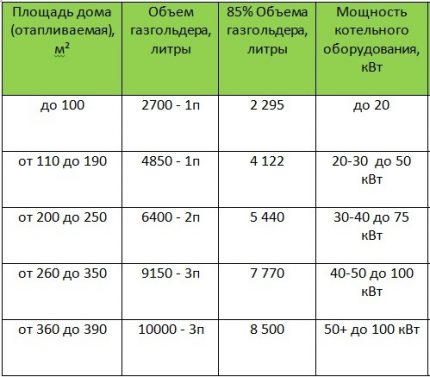
Our calculation of the average values of the selection of liquefied gas from a gas tank and generally accepted standards allow us to determine the frequency of gas tank refueling. With an average annual consumption of 30 liters of gas per 1 m2 heated area, refueling liquefied gas with a volume of 2295 liters in a 2700 liter tank for a house of 100 m2 will be enough for 9 months.
By the same method, but for the house 150 m2, we consider how much the LHG in the heating system from the gas tank for 4850 liters is enough.During the year, 4,500 liters are consumed, so a filling volume of 4122 liters is enough to heat a house for 10 months.
From the calculations it is clear that refueling will have to be done twice a year. And it is economically feasible through the use of "Summer" and "winter" LPG.
Gas saving tips
It is possible to reduce gas consumption from a gas tank by performing the following energy-saving measures:
- insulation of walls, roofs, attics, basement ceilings;
- replacement of old window blocks with modern double-glazed windows with a non-freezing profile;
- optimal setting of boiler parameters;
- installation of an energy-efficient condensing type gas boiler for heating;
- using collector heating systemhaving a higher efficiency and the ability to regulate the flow of coolant on each heating device;
- equipping heating batteries with temperature regulators.
A good effect on saving gas is achieved by installing controllers that automate the process of controlling the heat supply.
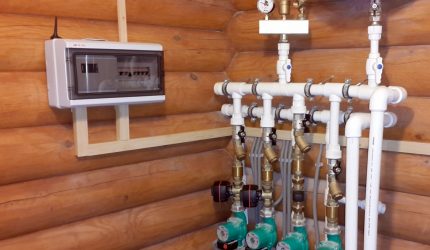
Moreover, modern controllers are usually smart devices with which you can remotely control the boiler from a mobile phone.
Inexpensive alternative to such devices with remote control are programmable or daily thermostats, which also allow saving energy.
A modern solution for saving gas from an offline storage is smart home system.
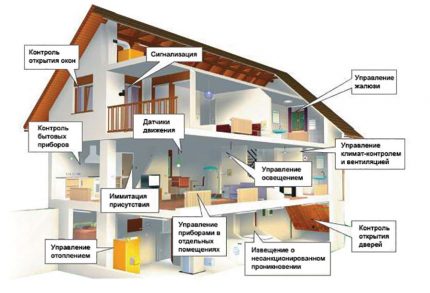
The climate control function in the house can be installed separately or integrated into a common set of “utilities”.
Such technologies make it possible to economically use gas for heating during the day in separate rooms. You can configure the system to work in heating mode in the absence of tenants and remotely, before arriving home, turn on full heating.
The main problem of introducing a smart home climate control system is the relatively high price of the issue and the need for design before the installation of the heating system.
Conclusions and useful video on the topic
An interesting technique for calculating gas consumption for heating and tips for reducing its costs:
Expert advice on the economically viable choice of the volume of a gas tank:
9 tips to reduce gas consumption used for heating a house:
It must be understood that all the calculations that we propose to use when using gas from a gas holder are rather arbitrary. Even a specialist will not be able to determine and predict exactly how much liquefied gas will be consumed over a specific period.
But the above technique, based on the practice of operating autonomous gas systems, displays reliable averaged values of gas consumption.
These calculations and the given useful tips will make it possible to correctly choose the optimal gas tank and plan the frequency of its refueling.
If you have experience using gas holders for heating, please share it with our readers. Tell us about the intricacies of using such equipment. Write your comments, ask questions - the contact block is located below.

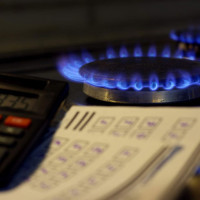 How to determine gas flow: methods for measuring and calculating the fuel used
How to determine gas flow: methods for measuring and calculating the fuel used 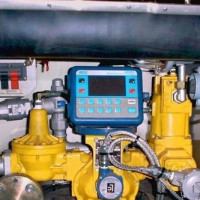 How and in what is gas flow measured: measurement methods + overview of all types of gas flow meters
How and in what is gas flow measured: measurement methods + overview of all types of gas flow meters 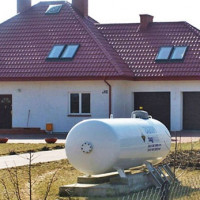 The cost of installing a gas tank in a private house: prices for gasification
The cost of installing a gas tank in a private house: prices for gasification  How much does it cost to connect gas to a private house: the price of organizing gas supply
How much does it cost to connect gas to a private house: the price of organizing gas supply 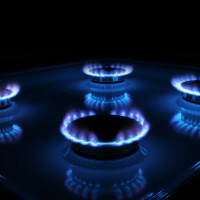 How much gas a gas stove consumes: gas flow calculation procedure
How much gas a gas stove consumes: gas flow calculation procedure 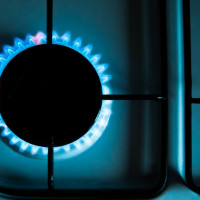 The rate of gas consumption per 1 person per month in a house without a meter: the principle of calculating gas costs
The rate of gas consumption per 1 person per month in a house without a meter: the principle of calculating gas costs  The best washing machines with dryer: model rating and customer tips
The best washing machines with dryer: model rating and customer tips  What is the color temperature of light and the nuances of choosing the temperature of the lamps to suit your needs
What is the color temperature of light and the nuances of choosing the temperature of the lamps to suit your needs  Replacement of a geyser in an apartment: replacement paperwork + basic norms and requirements
Replacement of a geyser in an apartment: replacement paperwork + basic norms and requirements
As far as I understand, a gas holder is an option for those who do not have a pipe nearby? In what way does it surpass gas from the highway or is it plus in autonomy?
Plus from the gas tank in only one case: it will provide gas if there is no main pipe nearby. Well, they won’t conduct a gas pipeline according to our moronic laws (as in my case).